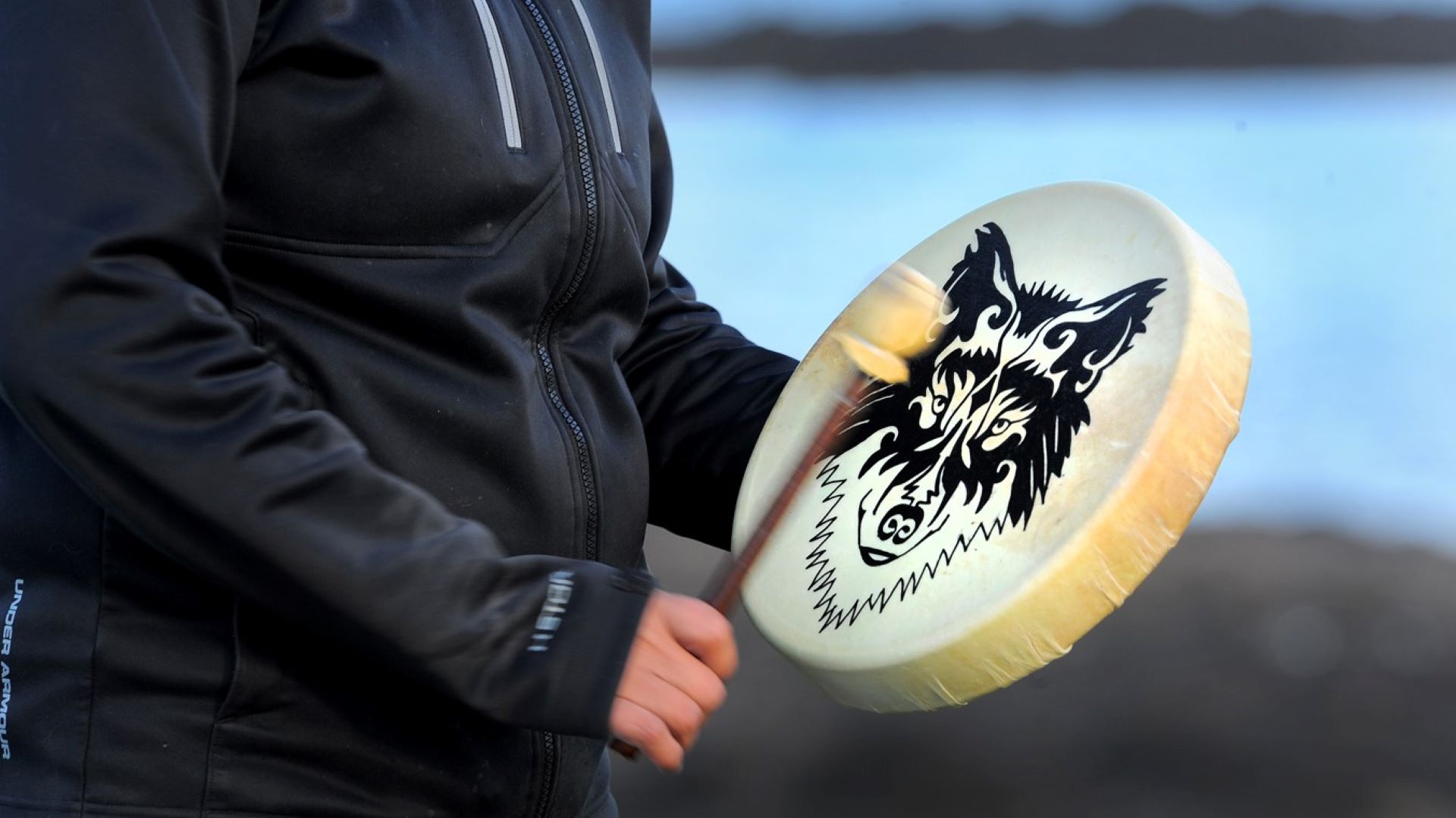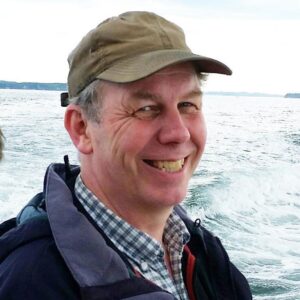The screening of a PBS film about efforts to preserve Native languages in the U.S., including the Passamaquoddy language, brought forth strong emotions among Passamaquoddy tribal citizens who attended the premiere showing in the state at the Eastport Arts Center on November 1.
The “Language is Life” episode from the new PBS Native America series will be shown on the PBS television channel on Tuesday, November 14, at 9 p.m.
The film notes that there were over 300 languages spoken by Native peoples across what is now the United States before 1492. Now there are approximately 170, and it’s projected that by 2050 there will be only about 20 left.
Along with relating efforts in Passamaquoddy, Navajo and Cherokee communities to keep their languages alive, the episode also looks at the land-back movement in tribal communities, and the film follows Donald Soctomah, the Passamaquoddy tribal historic preservation officer, and Dwayne Tomah, the director of the tribal museum at Sipayik, as they travel in June 2022 to a reclamation celebration for the return of Pine Island in Big Lake to the tribe.
In the 1800s, the island had been renamed White’s Island so that it wouldn’t match the name on a treaty, and thus the land was taken from the tribe. “The state used language to steal land,” Tomah noted, and then loggers stripped the island “of its very name.”
Along with the taking of tribal lands, boarding schools that operated from 1890 to the 1960s were used as part of the U.S. government’s policy to eliminate Native culture, as reflected in Capt. Richard Pratt’s philosophy of assimilation: “Kill the Indian in him and save the man.”
Recovering language is an important step for healing from historic trauma, the film’s narrator notes.
The recovery of the Passamaquoddy language included the discovery of the first field recordings of Native American voices, which were of Passamaquoddy songs and stories that anthropologist Jesse Walter Fewkes recorded in 1890 in Calais.
The film shows Tomah listening to one of the wax cylinder recordings of an original Snake Dance song that has since changed over time. He notes the tribe’s teachings of unity and coming together are still within the song. The recordings will help with ensuring that the Passamaquoddy language, songs and stories will continue into the future.
Listening to one of the recordings at a gathering at Sipayik, tribal elder Madonna Soctomah noted that she when she was a child she only spoke Passamaquoddy, which gave her a sense of self.
“We knew who we were. The language is who I am,” she states in the film. The recovery of the wax cylinders is part of the renewal of the tribe’s culture, Donald Soctomah observes. “The language is coming back.”
He noted both the return of the wax cylinders and of the island to the tribe are so important. “This island is part of our DNA,” he stated, pointing out that sacred spaces should be returned to their rightful owners.
And Tomah observed, “If you know where you come from, you’ll know where you’re going.”
During the discussion after the screening, which was led by Gail Dana-Sacco, Maggie Dana, a former chief who also is featured in the film, reflected on all that the tribe has lost but is now reconnecting with. “Hearing our ancestors is powerful,” she noted, as she observed the importance to the tribe’s future of being able to have its language.
Dana-Sacco also reflected on the grief and sadness with language loss and noted “the structures that have wreaked havoc not just on us but everybody.” She added, “Language holds the key to our identification with the earth and the land that we come from.”
Following up on that point, Donald Soctomah commented on how language is part of the tribe’s culture, as the words and their usage reflect how one views the world. “Language and culture are one. If you lose one, you lose the other. Your thinking processes will be different.”
The strength of the tribe’s culture kept the language alive, even while the Passamaquoddy “have been surrounded by the English and French languages for 400 years.” He also pointed to the need “to find a magic way to get younger generations to learn to speak” the language, adding that “it takes effort and will.”
Tomah noted that the discovery of the wax cylinders raised intellectual property questions that need to be addressed. The tribe was the first to develop a process for bringing back the cylinders to the community and has also had ancestral remains returned recently. Tomah added that many people are contributing to bringing to light the language loss and to its revival.
He also pointed to how much of what is taught about history may not be true. “We need to talk about historical truth,” from “the barbaric legal system that supports genocidal principles,” to “hidden secrets” and the language loss that is worldwide.
While Indigenous people carry trauma from the past, those of European ancestry do, too, in the form of shame and guilt. “Healing is so important,” but it does not exclude anyone. “We are all in this together.”
Dana-Sacco observed that “the beauty and the richness” of the tribe’s language and teachings resonate within its people and “are what will keep us together as a nation.” Of the language, she noted, “We are waking it up. It’s there.”
And of the language revival efforts, she said, “I have so much hope.” Asking “how do we bring the next generations along,” she answered with optimism, “We can do it.”







